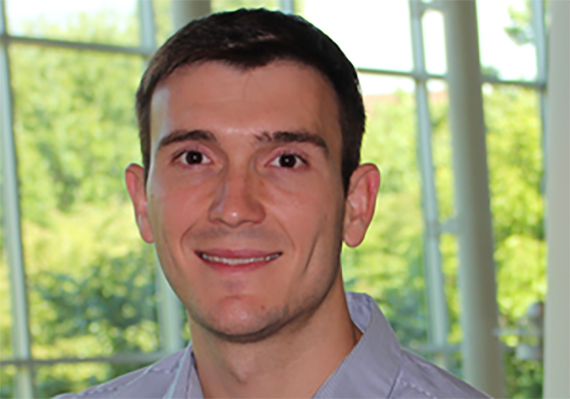Date/Time
Date(s) - 10/28/2019
9:35 am - 10:25 am
Location
New Engineering Building – Room 201
Categories No Categories
A.J. Medford, Ph.D.
Assistant Professor
Georgia Tech
“Fertilizer from Air and Light: Fundamental understanding and applications of photocatalytic nitrogen fixation”
Abstract:
Solar-driven conversion of atmospheric nitrogen to ammonia at ambient conditions has been reported for decades, and has the potential to revolutionize production of ammonia-based fertilizers. However, reported rates are impractically low, and relatively little was known about the chemical mechanism through which the process occurs. This talk will briefly review the history of photocatalytic nitrogen fixation, with a focus on the most common titania-based catalysts. Recent results based on density functional theory (DFT) calculations along with surface science experiments that shed light on the fundamental chemistry and physics of the process will be introduced, and a full mechanistic pathway is proposed. The implications of these findings on the optimization of catalyst performance will be briefly discussed, and the agronomic advantages of distributed production of fertilizers from air and sunlight will be described. Target performance metrics for catalyst design are estimated from back-of-the-envelope calculations, revealing that efficiencies needed for solar fertilizer catalysts are substantially lower than the requirements for solar fuel production. Several challenges and strategies for developing a solar fertilizer process from nitrogen fixation photocatalysts are presented. The findings indicate that photocatalysis presents an efficient chemical route to convert nitrogen to ammonia, and that ammonia-based solar fertilizers present a novel strategy to capture solar energy, reduce carbon emissions, and address global hunger.
Bio:
AJ Medford is an Assistant Professor in the School of Chemical & Biomolecular Engineering. He attended North Carolina State University as an undergraduate, and subsequently spent a year as a Fulbright fellow at the Technical University of Denmark before attending Stanford University where he received his Ph.D. in Chemical Engineering. His past research has spanned a wide range of applications including lithium-ion battery electrodes, polymer solar cells, data science, and catalysis. His thesis research focused on developing computational tools for analyzing trends in catalysis under the guidance of Prof. Jens Nørskov, and as a postdoc he worked with Prof. Surya Kalidindi on data infrastructure for materials science. His current research is at the intersection of catalysis and surface science, computational chemistry, and machine learning. Particular projects include the development of methods for automatically determining reaction mechanisms from transient kinetics experiments, applying computational chemistry to understand photocatalytic nitrogen fixation, and exploring machine-learning approaches for improving the accuracy of density functional theory calculations.

